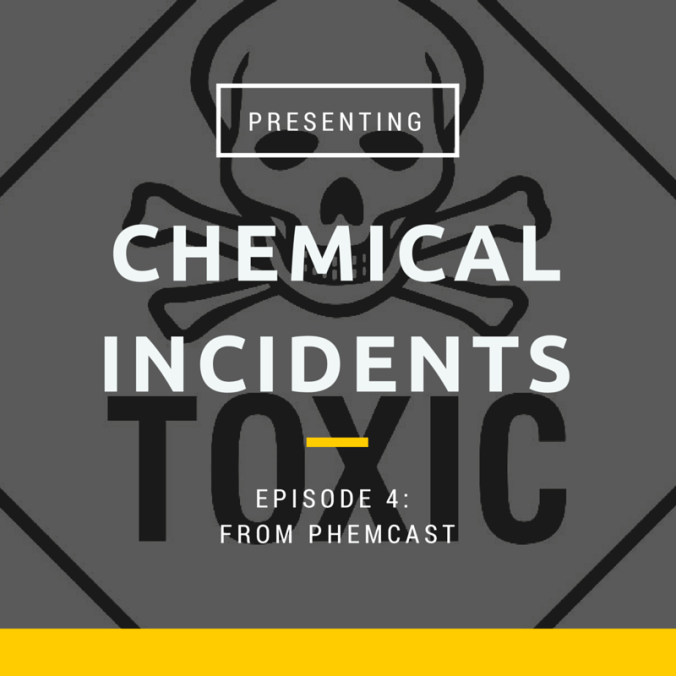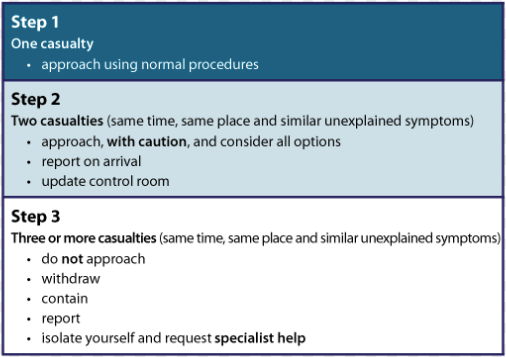
We hope you enjoyed this PHEMCast. Please feedback your comments via the blog, twitter or email us on PHEMCAST@gmail.com.
The NARU video we mention in the podcast can be accessed here:
http://naru.org.uk/videos/ior-nhs/
And the paper we discuss is:
- Chilcott RP. Managing mass casualties and decontamination. Environmental International. 2014; 72: 37-45.
This is the Step 1,2,3 tool described:

For more information on the toxidromes associated with various chemicals, biological agents and radiation sources have a look at this document (admittedly it’s a few years old but the content is still good, especially the flow chart which is pasted below):

What is an anti-muscarinic chemical?
- Anti-muscarinic = blocking the muscarinic receptors, ie blocking the effect of acetylcholine, hence also called anti-cholinergic. Impacts on parasympathetic stimulation. Antimuscarinic effects include dilated pupils (leading to blurred vision), reduced secretion of saliva (hence dry mouth), sweat and digestive juices. Relaxation of smooth muscle causing urinary retention, ileus. Also tachycardia, confusion progressing to delirum/coma.
- Nerve agents inhibit anticholinesterase therefore there is an excess of acetylcholine resulting in opposite features: diarrhoea, urination, miosis, increased bronchial secretions, bronchoconstriction, vomiting, lacrimation, salivation.
Always ahead of the curve… St Emlyns have recently published a blog post on this very topic! It’s great, so have a read:
http://stemlynsblog.org/cbrn-an-introduction/
Further Reading
- Monteith RG. Pearce LDR. Self-care Decontamination within a Chemical Exposure Mass-casualty Incident. Prehospital and Disaster Medicine. 2015; 30: 288-296.
- http://chemm.nlm.nih.gov/mmghome.htm
- Centers for Disease Control and Prevention. Chemical Suicides in Automobiles – Six States, 2006-2010. JAMA. 2001; 306(16): 1751-1753.
- http://www.msdmanuals.com/en-gb/professional/injuries;-poisoning/poisoning/general-principles-of-poisoning#v1118045
- https://www.england.nhs.uk/wp-content/uploads/2015/04/eprr-chemical-incidents.pdf
- JRCALC http://www2.warwick.ac.uk/fac/med/research/hsri/emergencycare/prehospitalcare/jrcalcstakeholderwebsite/guidelines/chemical_biological_radiological_and_nuclear_incidents_2006.pdf
How to cite this podcast:
Nutbeam T, Bosanko C. Chemical Incidents. PHEMCAST. 2016 [cite Date Accessed]. Available from: http://www.phemcast.co.uk
Pingback: Episode 4: Chemical incidents | Prehospital and Retrieval Medicine - THE PHARM dedicated to the memory of Dr John Hinds
Pingback: LITFL Review 214 | LITFL: Life in the Fast Lane Medical Blog
Very informative episode (as always) always good to be reminded of what’s needed and also the change to decon guideline, keep the good work up, how about a podcast on sepsis ?
LikeLike